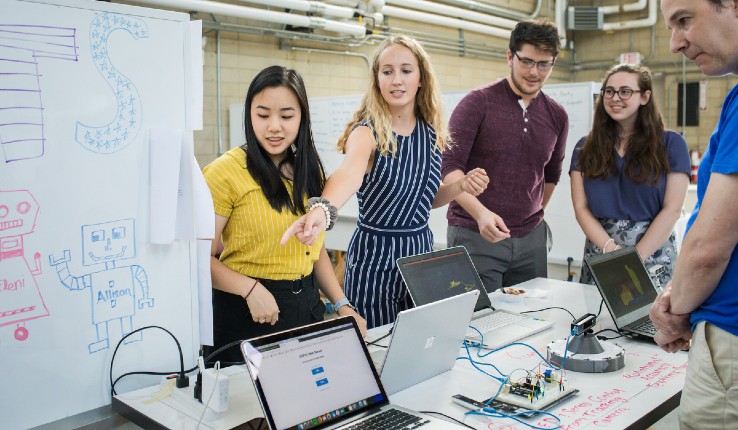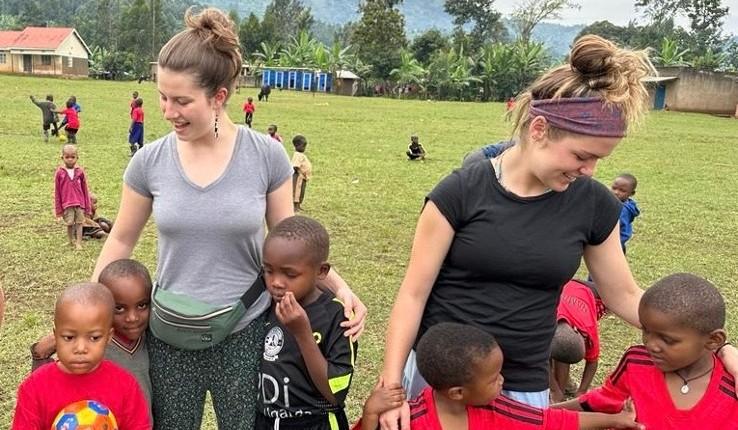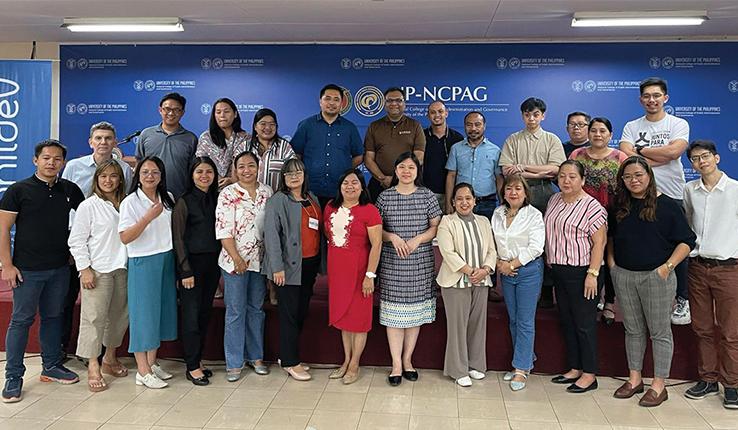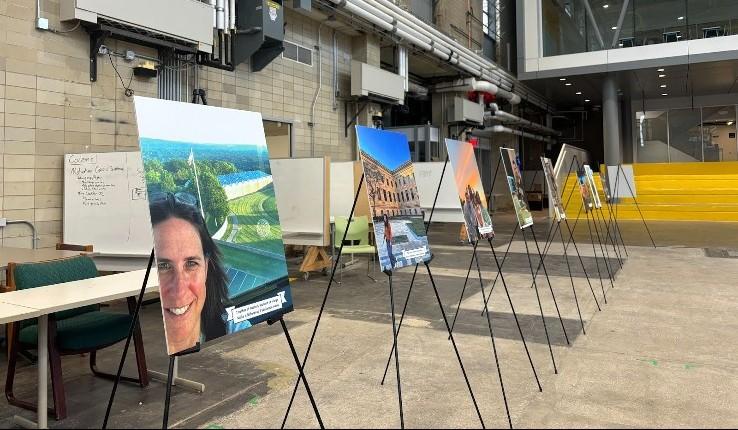At Lehigh, students are given a wide variety of opportunities regardless of where their interests lie or the major they intend to study.
The Office of Creative Inquiry helps students take the next step and expand on those opportunities by supporting a wide range of interdisciplinary initiatives that encourage students, faculty and external partners to collaborate on a range of projects as co-creators. Together, they pursue new intellectual, creative and artistic pathways that lead to transformative new innovations, expressions, and questions.
Below are four students involved in Creative Inquiry projects at Lehigh who can provide some more information about the programs, as well as Lehigh itself.
MOUNTAINTOP STUDENTS
Nathan Bowler ’23
Major: Mechanical Engineering
Hometown: Newark, DE
Activities: Lehigh Alliance of BattleBots, Lehigh Steel Bridge
Mountaintop Experience project: Testbed for Self-Driving Cars
Mountaintop Experience project members: Vaibhav Anand ’22, Yubo (Brian) Wang ’22, Sarah de Lange ’23, Zehui Xiao ’21
Mountaintop Experience project description and overall goals: Our team is creating a testbed for self-driving cars that will simulate various traffic scenarios in urban environments, with a focus on the local Bethlehem/Lehigh area. This summer, our goal was to create the navigation stack to get the vehicle to drive from point A to point B without colliding with anything. Due to COVID-19, our project began virtually. We plan to expand the virtual testbed for larger simulations and to also create a physical hardware infrastructure for testing using miniature race cars in a scaled urban city.
1) Why did you decide on attending Lehigh?
I began my college search the same way many people do, by going through lists of "Top Colleges for ‘insert major here,’" which in my case was mechanical engineering. Lehigh kept showing up near the top of the list. This warranted a visit and I fell in love with the campus. On my tour, I just happened to catch a professor who gave me a much more in-depth tour of the engineering facilities, and I was blown away. The pure magnitude of machinery for manufacturing was mind-blowing. It was the combination of all these factors that made me apply and ultimately attend.
2) How far along into the project are you and what work has been done so far?
So far, we have every piece of our navigation stack working on their own and we are working on implementing everything together so the individual pieces can talk to one another. The user inputs a destination, a route planner creates the route (similar to GPS), a goal planner works with a path planner to create the points along the route that the car needs to drive along, those points are sent to a path following algorithm which sends steering and velocity commands to the simulator, which moves the vehicle and provides sensor data that maps the environment onto a cost map, which the path planner uses to map out the points. This cycle continues until the vehicle reaches the destination.
3) What made you decide to take on this project?
Our mentor, Cristian-Ioan Vasile, assistant professor in mechanical engineering and mechanics, mentioned it in class and I had always been a fan of robotics. I had a strong programming background and felt it would be not only a great fit but also a fun learning experience. So far, I am by no means disappointed in my decision to join this project. The project is very relevant to the times and continuously provides many outlets for further innovations that could potentially be a company startup. I also always wanted to do something that no one has done before. Research forces innovation. When you are the first to do something, simply "googling" the answer isn't an option. You really have to think through the problem and brainstorm solutions.
4) What have you learned so far in working on this project?
We are using a lot of newer technologies that are present everywhere in technology. The software only runs on the Ubuntu operating system so our whole team had to learn how to navigate it and interface using terminal commands. We are also heavily relying on GitHub for storing and sharing our coding which had its own learning curve. The project constantly shows me the importance of good documentation and keeping a log of your work. The breadth of majors on our team shows that interdisciplinary work is not only possible but also highly beneficial. Some of us have had classes that allow us to break off into our specialties, which improves the quality and efficiency of our work. We have only scratched the surface of what this project can teach us and I look forward to learning more.
Nic Altenderfer ’23
Major: Mechanical Engineering
Hometown: Lititz, PA
Activities: Formula Racing Team, Sigma Phi Delta
Mountaintop Experience project: Mathematical Modeling and Syndromic Surveillance of COVID-19 in Pennsylvania
Mountaintop Experience project members: Tariq Al-Serhan ’21, Poplar Yang ’22, Andrew Donnachie ’21, Jailene Garcia ’23, Alex Kline ’23, Kenny Lin ’22, Eunice Liu ’22, Damon Luk ’21, Martin Magazzolo ’21, Michael Nelson ’22G
Mountaintop Experience project description and overall goals: We broke into teams, each of which created a different type of statistical model to try and forecast the amount of new COVID-19 cases for each county in Pennsylvania. The models are also going to be combined into an ensemble to try and allow our predictions to be as accurate as possible. Our overall goals were to get each of our models working, create the ensemble, write a research paper about it and to give it to the governor as something else to aid in his decision making for things related to the pandemic.
1) Why did you decide on attending Lehigh?
It is closer to home than some of the other schools I was looking at and mainly because of all the opportunities that were available through Lehigh, like being able to work on this project.
2) How far along into the project are you and what work has been done so far?
So far each team has a working model, so now the ensemble and research paper are being worked on.
3) What made you decide to take on this project?
I was going to be studying abroad in Germany this summer but it was canceled due to the pandemic so I was searching for projects that were still looking for applicants and found this one [to be] very interesting.
4) What have you learned so far in working on this project?
I have learned how to use GitHub to collaboratively work on coding projects with a team and have learned more about statistical models/ensembles and python.
DATA FOR IMPACT STUDENTS
Miguel Martinez ’21
Major: Behavioral Neuroscience and Music Composition
Hometown: Reading, PA
Activities: Marching 97, Wind Ensemble, Clarinet Choir, Philharmonic Orchestra, Symphonic Band, Miwa Lab
Data for Impact project: Neurogenetics of Anxiety Disorders
Data for Impact project members: Marley Sorbello ’21, Ella Imhof ’23, Brandon Hocking ’22
Data for Impact project description and overall goals: The Neurogenetics of Anxiety Disorders is a study of the genes correlated with common anxiety symptoms. The near-term goal is to identify a subpopulation of people genetically predisposed toward anxiety orders while the long-term goal is to help develop a medicinal approach to treating intractable anxiety disorder.
1) Why did you decide on attending Lehigh?
I decided on attending Lehigh due to the fact that they are very generous in terms of financial aid grants. I originally planned on attending a local school to cut down on loans, but Lehigh assisted very well for the high[-quality] education that they offer. When I was visiting schools, I was very interested in the marching band and that made me continue the application process because I love music and ensembles.
2) How far along into the project are you and what work has been done so far?
There are many levels of this project, but the level we are continuing on, by using correlation statistics, is the longest as acquiring genetic information can prove to be difficult. Many of the previous years have shown data already linking the mutation with anxiety, but we hope to gather more data as the years go on to establish a proper statistical analysis.
3) What made you decide to take on this project?
What originally struck my interest in this project is the association of genetics and personality traits. I continued in the project because I have a high interest in neuroscience related to music. More specifically, I am interested in how music affects the mind and body and hopefully it can become a career goal of mine. This project would give me better foundational skills in being able to eventually pursue my own career and accomplish my goals. This project would serve as a stepping-stone in achieving my dreams and a great way to make connections through laboratory research.
4) What have you learned so far in working on this project?
I learned many foundations in genetics, psychology and statistics, especially considering that I was part of a very similar lab in the previous year. The most important part is working in a team and effective time-management of not only myself, but others within the group.
Zhihao Guo ’23
Major: Chemical Engineering
Hometown: Oakland, California
Data for Impact project: Thinking Outside the (Lunch) Box – Establishing a Food Carbon Footprint
Data for Impact project members: Marley Sorbello ’21, Ella Imhof ’23, Brandon Hocking ’22
Data for Impact project description and overall goals: We will create a food carbon footprint calculator that suits Lehigh Dining’s needs to determine which menu items are the most and least carbon intensive. This end goal will allow Lehigh Dining to provide a carbon footprint (red - high, yellow - medium, green - low) for key menu items at dining locations across campus. This will encourage students, faculty and staff to choose to alter their food choices based on the impact of the menu item. We will collect and analyze data from Lehigh Dining, review existing carbon footprint calculators and examine current practices in the restaurant industry and at colleges/universities. We will be working with different kinds of data including recipe ingredients, ingredient quantities, distance of ingredient sourcing, food carbon intensities, etc.
1) Why did you decide on attending Lehigh?
I decided to attend Lehigh because of its world-class engineering department, as well as the generous financial aid package it offered me.
2) How far along into the project are you and what work has been done so far?
We built a functioning algorithm and interface so far, which is the vast majority of the project. The rest is to ensure interface aesthetics.
3) What made you decide to take on this project?
I aspire to a career in sustainable development and this endeavor pertains to sustainability.
4) What have you learned so far in working on this project?
I've learned HTML and CSS while working on the project.





